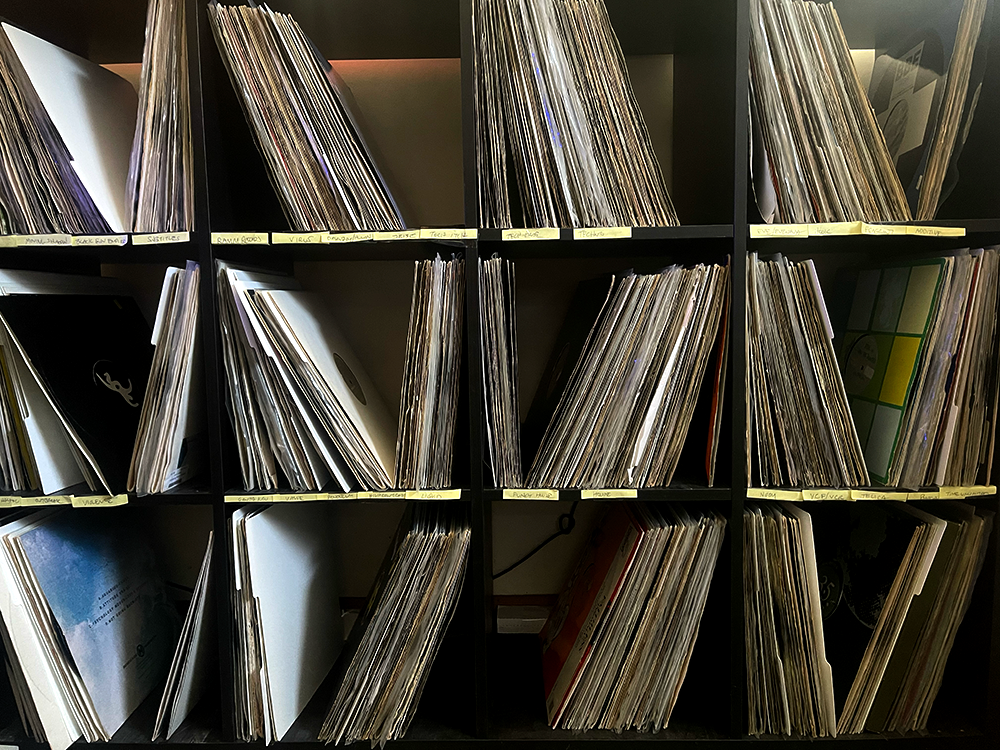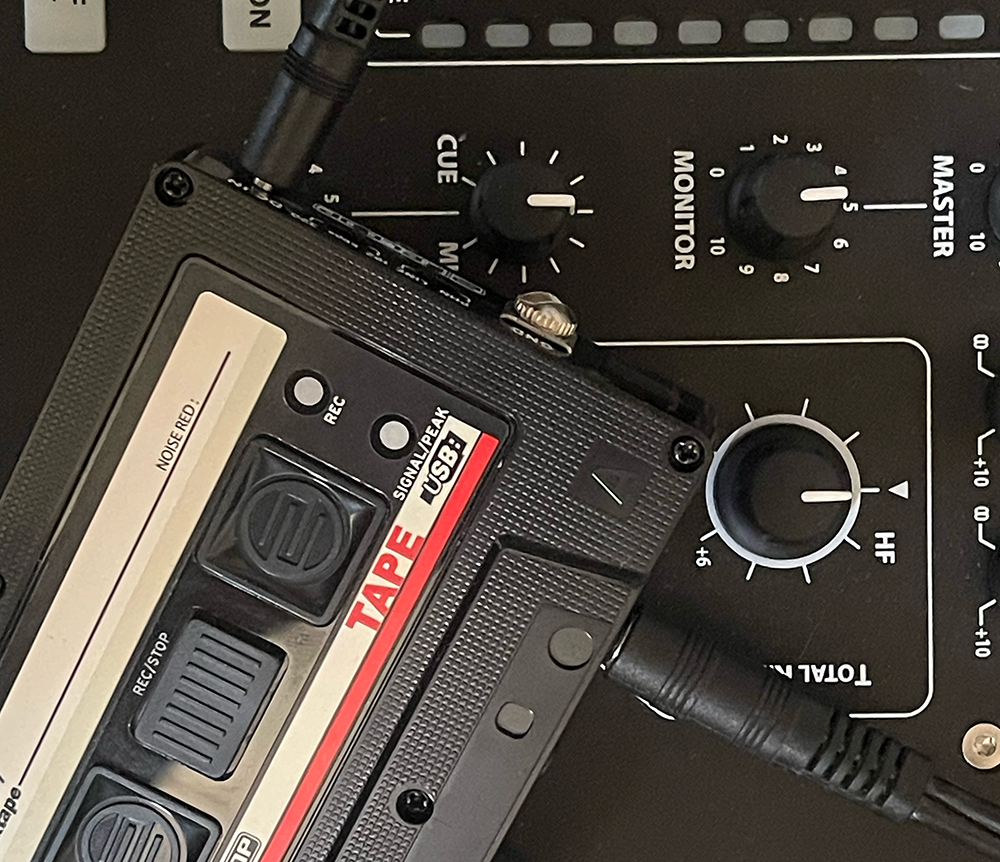Practicing and Playlists
My next gig is a few weeks away, a double-header at the same event. I’ll be playing an hour, solo, at 9pm on Friday, 19 April, and then a back-to-back with a DJ from Binghamton on Saturday, 20 April.
I also recently got a shipment of new records, some of which are intended for this next event. This requires both (technical) practice, (some) set planning, and studying my material.
Digital vs. Analog
Among DJs, there are basically three kinds:
- Analog DJs (vinyl only, like me)
- Hybrid DJs (using regular turntables, with timecode vinyl)
- Digital DJs (using a digital controller or digital turntable)
There is an entirely different discussion about the weird gatekeeping and territoriality across some of these (no grudges here!); I don’t want to get into that right now.
The key difference between them is how the DJ interacts with the music. For both Analog and Hybrid cases, the DJ is physically manipulating an acetate record on a turntable platter. This manipulation will affect the playback speed, which is a critical aspect of these styles because it’s how beatmatching can happen.
For a Digital DJ, they have a number of ways of manipulating the playback speed, including tempo sliders, jog wheels, and even the (as it turns out, quite controversial) Sync Button (see earlier remark).
A fellow DJ who came up as a Vinyl but has since transitioned to Digital recently opined (heavily paraphrased):
Digital tracks are like one-night stands. Vinyl is like a girlfriend, or a wife. With digital tracks, I will run through them and [because the controller does the analysis for me] and play or pass–I don’t care and have no loyalty. With records, I have to get to know them - I need to know the song back-to-front, every weird crack or pop or divot.
His original words were far more colorful.
Music Libraries
A typical digital DJ will either use a USB drive with a standalone controller, or they’ll have the controller hooked up to their laptop. In either case it’s quite likely they will have access to literally thousands of songs.
By comparison, when I roll up to an event, if I really pack my crate fully, I will have somewhere between 50-60 records with me. That’s 100-200 songs, of which I will probably only play 1/4 of those. At home in my studio, I have hundreds of records–I don’t know the exact number anymore.
A digital DJ can theoretically bring their whole library with them to every event, have access to all of their material at any given moment.

I have to pre-select a small subset of my material before I go, which means I need to know which tracks I might play. I have to basically know all my records on sight alone. I would say for at least half of my records, I can look at the plate and immediately hear the song in my head. For maybe 10% of my collection I don’t even need to hear it, I can think about it abstractly.
It’s really not feasible for a digital DJ to study their tracks with the level of familiarity that I am able to study mine – there’s just too many – but they also don’t need to because the controller will assist them with most of the things that the studying would be needed for.
Studying
I have two methods for studying, when I practice: casual listening (for familiarity) and studio practice. I’ve found both to be necessary.

Casual listening
This is simple: rip the records to digital format (yes, I am aware of the irony) so that I can listen to them on my computer while I’m working, or copy them to my phone and listen to them in the car when I drive around.
It’s passive. I don’t take notes or anything. The goal is purely to listen to them each as much as possible so that I have a strong memory of the song, particularly how it begins and ends, as well as any key qualities it might have (tone, approximate tempo, notable rhythmic qualities, etc). It’s similar to how we subconsciously learn songs by hearing them on the radio, or Spotify, or whatever other ways we listen to music in the background.
Typically five to seven times is enough, but I don’t keep count.
When I have focused studying like for this event, I will make a separate playlist with just the songs that I think are likely candidates, and listen to that on heavy rotation. I will also make a Notes document to list out songs that I think might be worth considering.
Another aspect that I’ve found to be important here is to have whatever the record looks like in the crate (album art, if it has it, or the record label if it doesn’t have album art). This isn’t as important, but it’s still helpful to have a visual image associated with the song. Sometimes I don’t remember the name of the song but I know “White label, blue marker, weird crown logo”.
Studio practice
This is me standing at the decks, putting a record on, and mixing another record into it. Sometimes I have a loose plan (“just this crate”) other times I just play a song and see what song it calls to mind for me.
I used to just play these ephemerally – no recordings, just seeing how it went. This year I started being a bit more intentional and recording them as throwaway sets: I try to do them as one solid set (no needle-resetting, roll with the mistakes) but the intention is not to share them with anyone.
I will usually listen to these recordings for a few days after to study, in particular, how well two songs work together, what they sound like coming in and going out, and also listening for any technical errors I’m making so that I can work on practicing that.
For the last event I played at, I recorded 4 sets over 5 days. The set I ended up playing that night had some tracks in common with them, but it was maybe half-improvised. Those four practice sets helped me identify some problematic mixes (tracks which seemed like they would go well together but didn’t), and also study some tracks that I was less familiar.
In these next few weeks, leading up to the event, I’ll be studying as much as possible. Most days it’s just doing a 30 minute set on my lunch break and listening to the song while I do my job. I try to get a full hour in a few times a week, though.
Feeling prepared
I don’t think I ever get to a point where I feel fully settled and 100% ready. There always feels like there could be more practicing, more uncertainties to resolve. At some point, though, showtime comes up and ready or not, it’s time.
This used to be a lot more anxiety-inducing. Feeling worried that if I didn’t practice my sets to perfection I would mess up.
The “Studio Practice” work I do, especially now that it’s recorded, has forced me to more readily embrace my mistakes. Allowing only solo-takes means I can’t ever re-set the needle and try a mix again, fixing it in post. (For a promo, I have done this before–this is pretty common). Having to play through mistakes means that I get more practice in recovery – a needle dragging from a dust clod, a track jump from a dusty record, a missed cue, etc. This stuff also happens live! Forcing myself to recover from these things in my studio has helped me feel more confident that I can do the same in a live environment.
When it’s show time, what I call “Gym Day” because of the weight of all the gear I have to lug around, I can remind myself that I practice a lot, my skills are prepared, and I know my material well enough.